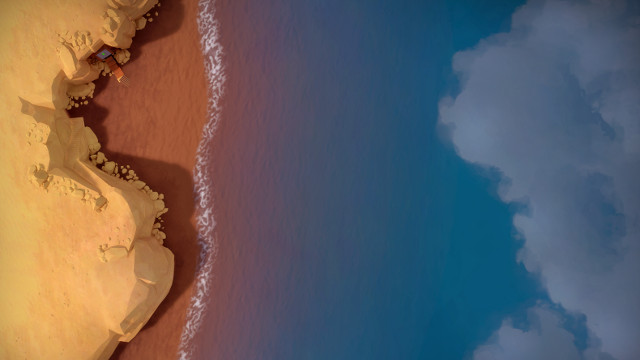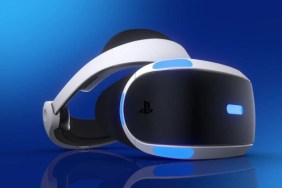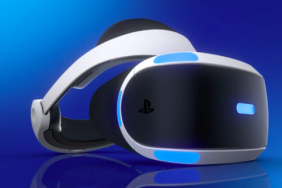The Witness is one of the most challenging and compelling games you will encounter this year. It has quickly become a hot topic of conversation due to its wealth of brain-testing puzzles that challenge the mind-power and patience of any individual who encounters them.
During its 40+ hour journey The Witness manages to introduce a myriad of concepts, each of which begin simply but become notoriously difficult as multiple concepts are merged into later puzzles. To help you on your path to victory, we have put together a guide to each puzzle type in the game. You can use this as a reference to ensure that you grasp puzzle concepts and the rules of each icon to their fullest while making progress through the island.
Note that below you will find general information regarding each puzzle type, as well as screenshots of solutions to some simple tutorial puzzles of each area. Spoilers are kept at a minimum.
Start to Finish Puzzles
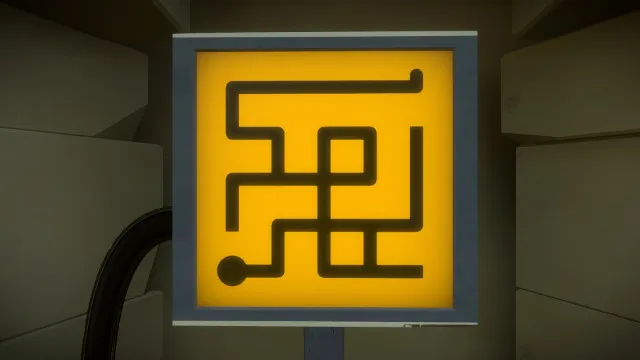
The first puzzle type you’re introduced to is the start to finish puzzle. Essentially, you need to drag your cursor from a round spot (seen at the bottom left of the above image) to a round endpoint (seen at the top right of the above image). You’ll find that more complex puzzles will throw variations at you which include multiple potential starting points and/or end points.
Virtually all the puzzles incorporate the start to finish mechanic, so it’s important to get a strong grasp of it before leaving the starting area.
Black Dot Puzzles
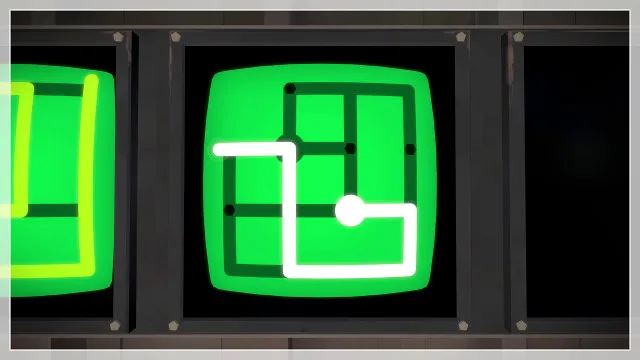
When you see black dots on a puzzle board, what you must do is ensure that your path from start to finish overlaps all of these dots. In the image above you’ll notice that four black dots are left uncleared, resulting in an incomplete puzzle.
Later in the game if you see a puzzle that has a black dot on every single grid, you may be surprised to learn that you have to path through the entire puzzle board in order to complete it. It might seem impossible at first, but you’ll figure it out in time.
White and Black Squares Puzzles
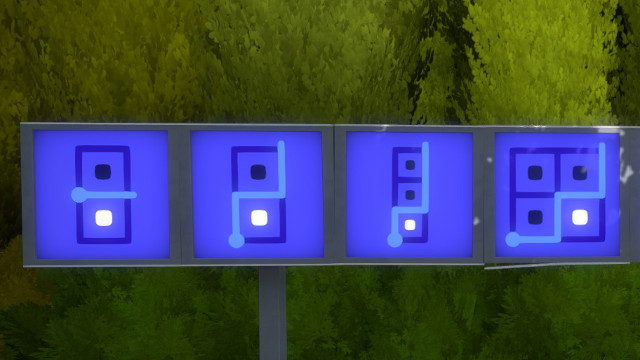
The white and black squares puzzle is frequently encountered, especially as it evolves into more complex variations later in the game. What you need to do to meet the requirements of this puzzle type is use your path to separate any black squares from adjacent white squares. As seen above, the paths cut between the black and white squares before heading to the endpoint. Squares of the same color can remain in the same region of the solution.
Later in the game you’ll notice that these black and white squares will be grouped in complex ways. Continue to find the boundaries where white squares touch black squares, separate them, and you can safely ignore groups of the same color.
Colored Squares Puzzles
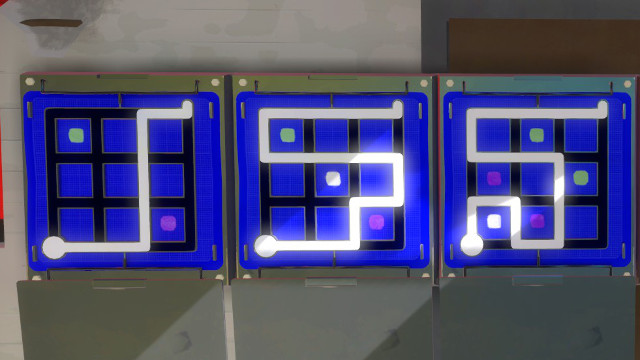
The colored squares puzzle is a variation of the black and white squares puzzle. Instead of only having to separate two colors of square, there are three or even four colors present that all have to be separated into different sections. The rules remain the same as the white and black squares puzzle despite the additional complexity.
As seen above, you need to ensure that your path cuts between all the various colors and separates them. Note that squares of the same color can be in the same region of your solution.
Cancellation Puzzles
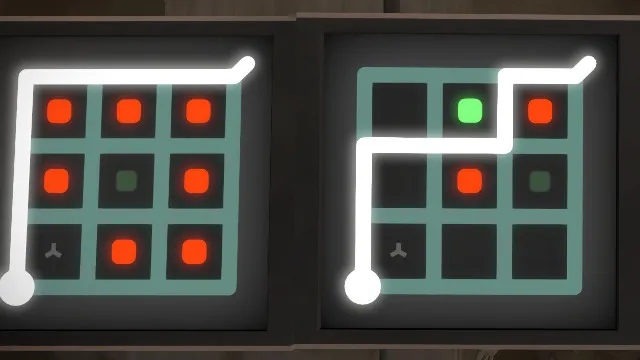
Cancel puzzles are yet another variation of the black and white squares puzzle, but with green and red lights instead. However, they are made much more complicated by the cancelation of one green or red light within the boundary area where the three prong icon is located. You essentially have to complete a black and white squares puzzle, but with the additional randomness of color cancelations within any area where the prong icon is present.
With these puzzles you’ll want to think about completing them similar to a black and white squares puzzle but with one disallowed color in the same region as a prong icon. If you do so correctly, that color will be unlit once you reach the puzzle endpoint.
Couples Puzzles
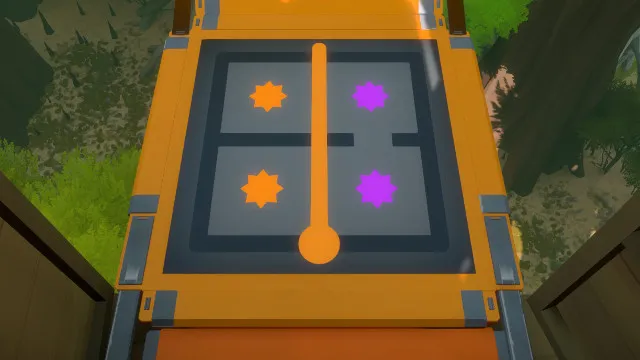
Couples puzzles are once again a variation of the black and white squares puzzle. This time around, colors are denoted with star-shaped icons. These colored stars must be grouped in sets of two of each color. This means ensuring that two stars of the same color are in the same area, and separated from any two other stars of the same color.
The tricky part that isn’t immediately obvious is that stars of different color don’t have to be separated. In other words, you can have two orange and purple stars in the same area, but any other sets of those two colors must be separated from them.
Symmetry Puzzles
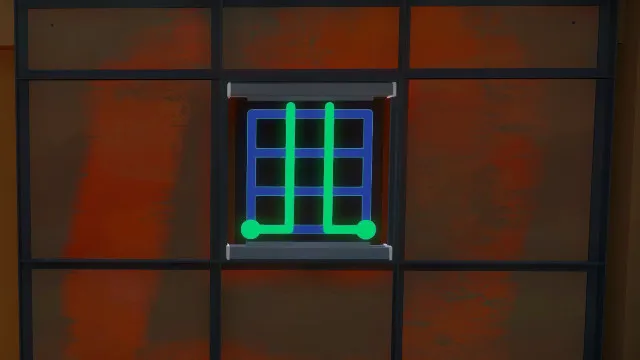
In this uncommon puzzle type you’re given two or more lines that are drawn as you move your cursor. Typically, subsequent sets of the line are mirrored, meaning you’re asked to read your movements backward and forwards to complete puzzles.
Early on symmetry puzzles can be completed easily by forcing movement along a path as one line or another collides into boundaries. However, later on you’ll want to carefully read your inputs and their movement along all paths for each grid that you move through to avoid dead ends and meet the requirements of multi-puzzle type combinations.
Glare Puzzles
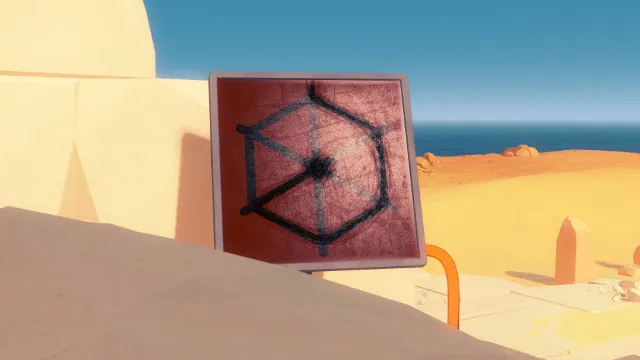
Glare puzzles require you to move around in the game world and use the sun’s glare off of objects to reveal the answer. These are exclusively found in the desert region of the game world, and are notably difficult and time consuming.
It is recommended that you walk in a zig zag pattern while trying to locate glare locations in an effort to avoid missing the solution perspective. You’ll want to take into consideration the sun’s position as well as any objects that have flat edges that could make them perfect for reflecting glare.
Object Puzzles
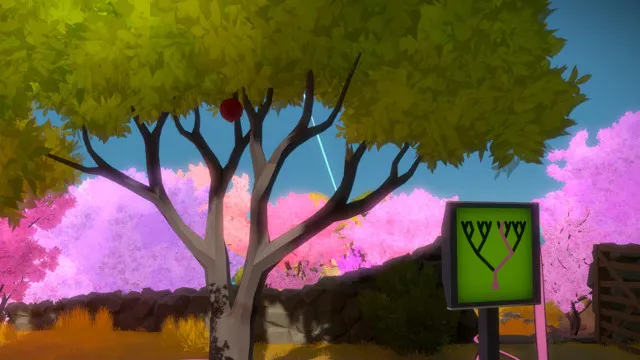
Object location puzzles are introduced early on in the experience, but are made far more complex later in the adventure. In the case of the early puzzles, you’re provided a puzzle layout that appears to be a set of tree branches. If you pay attention to the environment you’ll notice a tree nearby with a single apple. Your goal is to translate the 3D tree into the 2D puzzle format, and lead your line path to which branch the apple is located on.
Later it’ll become less obvious which object a puzzle is referring to. The best thing you can do for yourself is look for any patterns in the area around you that are similar to the puzzle, and then see what about that object stands out as possibly puzzle-oriented.
Perspective Puzzles
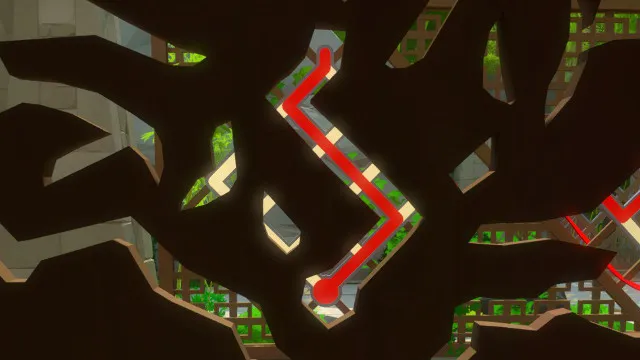
Perspective puzzles require you to look at the environment near the puzzle to find objects that draw the solution boundaries for you. Early on this is introduced with some simple rock puzzles, but later they become more difficult to locate, requiring you to search high and low for the solution key.
Be sure to look everywhere near the puzzle, both in front and behind, when you encounter any puzzle that has no obvious icon language. The absence of icons typically denotes a perspective puzzle.
Shadow Puzzles
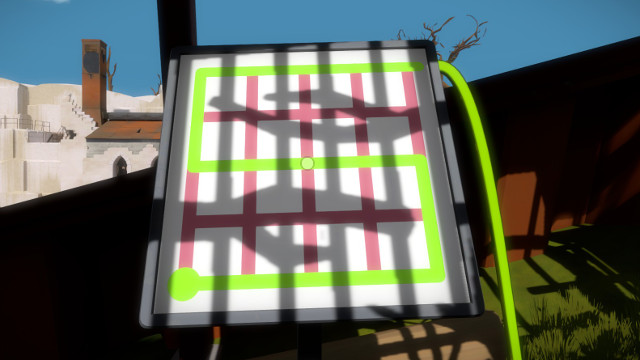
The shadow puzzle is a variation of the perspective puzzle. Instead of looking into the environment to find a boundary key, you need to use the shadows of objects such as trees to define the path.
As seen above, the shadow of a tree’s branches defines the solution directly on the puzzle. Note that there can and will be some shadows present on squares you need to pass through, but the major point is to find a pattern of what exactly the puzzle wants you draw inside or outside of. These are made harder in later puzzles when the shadows aren’t directly drawn on the puzzle, or the shadows don’t directly telegraph the path.
Audio Puzzles
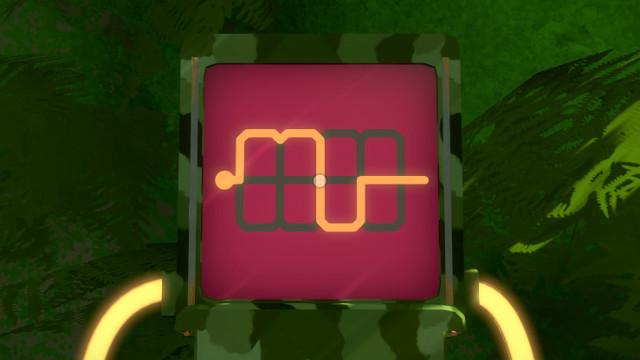
With audio puzzles you need to be able to differentiate between low and high notes in the environment. As you approach an audio puzzle you will trigger a small sound byte that plays sounds such as birds chirping.
The tricky part is when multiple layers of audio are stacked upon one another. While the higher pitched noises may appear to be what needs to be drawn on the puzzle board, sometimes it’s the less notable layers that the puzzle relies on. It may serve you well to wear headphones to ensure you have clear audio and can decipher the various layers and their notes.
Tetris Puzzles
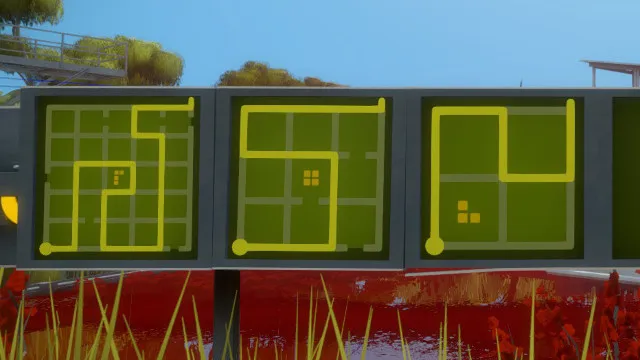
Tetris puzzles require you to draw the shape shown within an area using your line boundaries. Take for example in the image above where a three block corner shape is shown on the right-most puzzle. Using both the line and the natural boundary of the puzzle the shape is drawn before heading to the puzzle endpoint.
These puzzles are made more difficult using multiple shapes on one puzzle, and also the introduction of multi-direction tetris puzzles. Multi-direction tetris puzzles are denoted by an off-center shape, indicating that you can draw the shape in any orientation you’d like. Note that the shape must be drawn with the shape icon within the line boundary or it doesn’t count as a solution.
Maze Puzzles
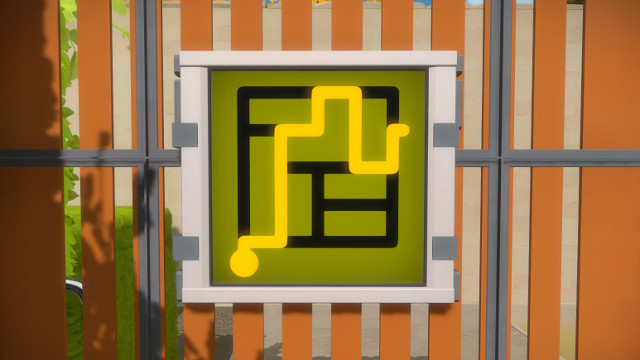
There are a set of difficult maze puzzles that must be completed. Each is distinct, but shares a common trait that there’s a correlation between the walking path of yourself through a maze or platform sequence, and the puzzle solution.
In addition, how you interpret the solution will rely upon multiple factors, including audio, multiple paths, and more. Pay attention the puzzle board and your environment for the best results.
Hidden Puzzles
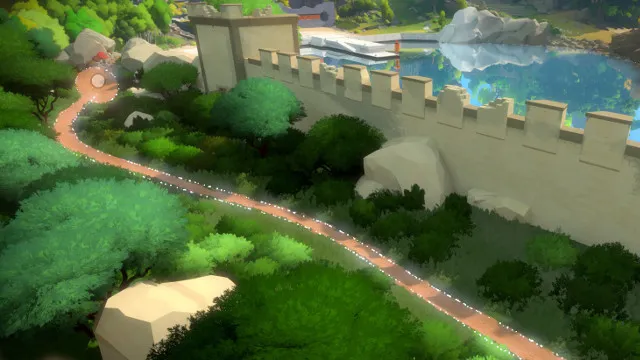
There are puzzles throughout the game world that are integrated into the environment rather than being on a board. These require you to look at them from a particular perspective, and then draw the line as if it were on a board.
If you are interested in locating these, always be on the lookout for circles and paths that could provide a hint to their location.
